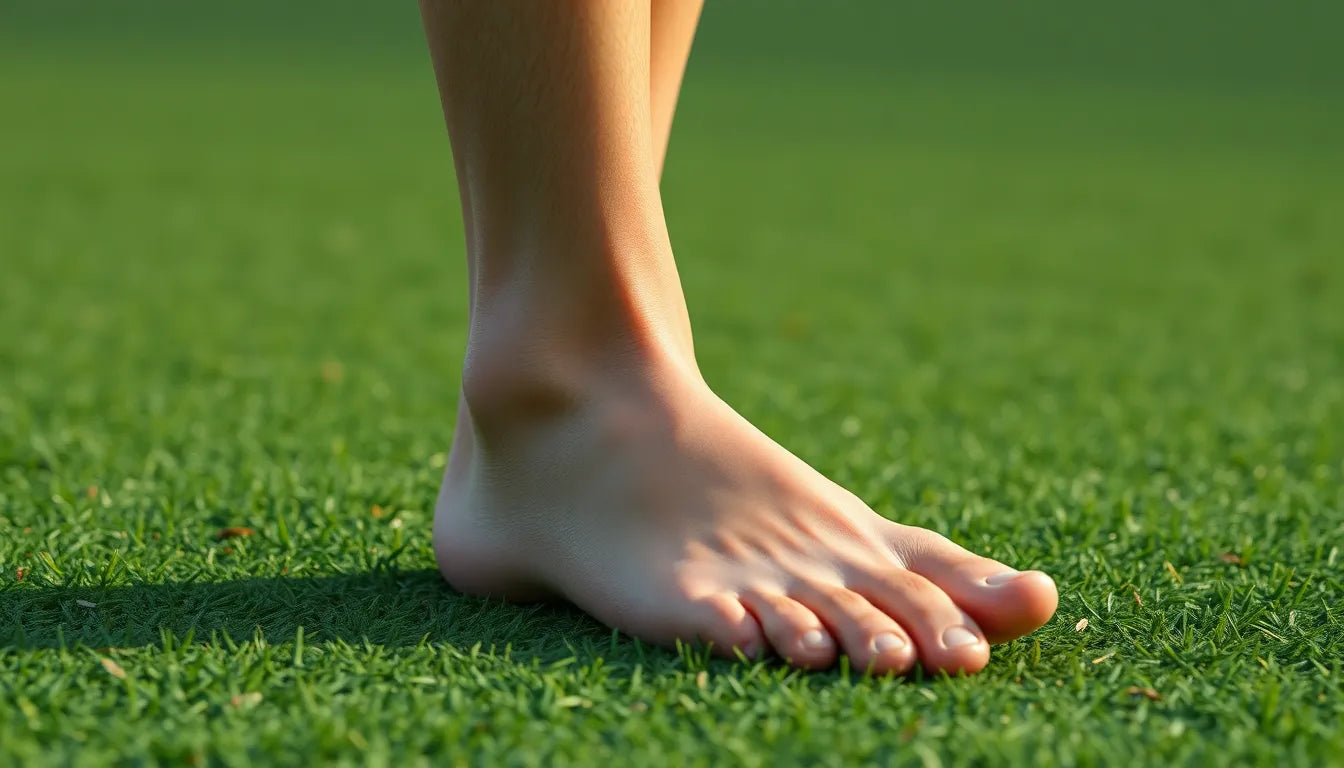Heel spurs, known as "hælspore" in Danish, are a common foot condition characterized by a bony growth on the underside of the heel bone. This condition often results in significant discomfort and can interfere with daily activities. Heel spurs are typically associated with plantar fasciitis, a condition that involves inflammation of the plantar fascia, the connective tissue that runs along the bottom of the foot. This inflammation can lead to the development of a heel spur over time.
Individuals suffering from heel spurs often experience sharp pain in the heel, especially when taking the first steps in the morning or after sitting for extended periods. The pain can be described as a stabbing sensation and may decrease as the foot warms up with activity. However, prolonged standing or walking can exacerbate the discomfort, making it challenging to maintain an active lifestyle.
Addressing heel spurs early is crucial to prevent chronic pain and potential complications. Without proper intervention, the condition can lead to altered gait patterns, which may cause additional strain on other parts of the body, such as the knees, hips, and lower back. This can result in a cascade of musculoskeletal issues that further complicate the individual’s health and mobility.
Effective management with targeted exercises
Fortunately, targeted exercises have proven to be highly effective in managing heel spur pain and improving overall foot health. Engaging in specific exercises can help alleviate pain, increase flexibility, and strengthen the muscles and tendons in the foot and lower leg. This not only aids in reducing the immediate discomfort but also contributes to long-term foot health by preventing the recurrence of heel spurs.
Incorporating exercises into a daily routine can significantly improve the condition of individuals suffering from heel spurs. These exercises are designed to stretch and strengthen the affected areas, promoting healing and reducing inflammation. They are particularly beneficial when performed consistently and with the correct technique. By dedicating a few minutes each day to these exercises, individuals can experience a noticeable reduction in pain and an improvement in their ability to perform daily activities without discomfort.
In the following sections, we will delve deeper into the specific exercises that can provide relief from heel spur pain. These exercises, supported by scientific studies and expert recommendations, offer a practical approach to managing this common foot condition. Whether you are dealing with mild discomfort or more severe pain, these exercises can be an integral part of your treatment strategy, helping you regain mobility and enjoy a more active lifestyle.
Understanding the role of exercises in heel spur management
Heel spurs, or "hælspore," can be effectively managed through targeted exercises, which play a crucial role in alleviating pain and promoting healing. These exercises focus on stretching and strengthening the muscles and tendons in the foot and lower leg, directly addressing the underlying causes of heel spur pain. By improving flexibility and reducing tension in the plantar fascia, these exercises help to minimize discomfort and enhance overall foot function.
Consistency and correct technique are vital when incorporating these exercises into your routine. Regular practice ensures that the muscles and tendons are gradually conditioned, leading to improved resilience and reduced pain over time. As supported by scientific studies, such as those conducted by Rathleff et al., systematic exercise regimens have been shown to offer significant relief from heel spur symptoms. These studies highlight exercise as a primary treatment method, emphasizing the importance of dedication to a structured exercise program.
Exercises for heel spur relief
Toe stretch
How to Perform: Sit comfortably and extend one leg. Use your hands to gently pull your toes upwards, stretching the plantar fascia. Hold for 15-30 seconds and repeat 3-5 times on each foot.
Benefits: This exercise increases flexibility and reduces tension in the plantar fascia, providing immediate relief and promoting long-term healing.
Calf raises
How to Perform: Stand with your feet hip-width apart. Slowly rise onto your toes, focusing pressure on the inside of your foot. Lower back down with control. Repeat 10-15 times for 2-3 sets.
Benefits: Calf raises strengthen the calf muscles and improve tendon resilience, helping to support the foot and reduce heel spur pain.
Elastic resistance toe curls
How to Perform: Sit with your feet flat on the ground. Place a resistance band around your toes and curl them downwards against the resistance. Perform 10-15 repetitions for 2-3 sets.
Benefits: This exercise strengthens foot muscles and enhances mobility, contributing to a more stable and pain-free foot structure.
Tennis ball massage
How to Perform: Place a tennis ball under your foot. Roll it back and forth, applying gentle pressure to massage the plantar fascia. Continue for 1-2 minutes per foot.
Benefits: The tennis ball massage increases blood flow and relieves tension in the foot, providing immediate comfort and aiding in recovery.
Eccentric heel drops
How to Perform: Stand on a step with your heels hanging off the edge. Slowly lower your heels below the step level, then return to the starting position. Repeat 10-15 times for 2-3 sets.
Benefits: Eccentric heel drops build tendon and arch resilience, reducing pain over time and preventing future heel spur development.
By integrating these exercises into your daily routine, you can effectively manage heel spur symptoms and enhance your overall foot health. Remember, the key to success lies in regular practice and attention to proper technique. These exercises not only provide relief but also contribute to the long-term prevention of heel spurs, allowing you to maintain an active and pain-free lifestyle.
additional tips for managing heel spurs

Lumbar support belt
Provides adjustable support and relief for lower back pain and tension.

Women's Posture Shirt™ - White
Patented NeuroBand™ shirt to support posture and relieve pain and tension.
Effectively managing heel spurs involves more than just performing exercises; it requires an integrated approach to ensure long-term relief and improved foot health. Incorporating these exercises into your daily routine is essential for optimal results. Consistency is key, as regular practice helps in building muscle strength and flexibility, which are crucial in alleviating heel spur pain.
When starting these exercises, it's important to progress gradually. Begin with a lower intensity and slowly increase as your comfort and strength improve. This approach not only prevents injury but also allows your body to adapt to the new demands being placed on it. Additionally, consider using ergonomic aids such as insoles, foam rollers, or resistance bands to complement your exercise regimen. These tools can enhance the effectiveness of your exercises by providing additional support and resistance.
when to seek professional help
While exercises are a powerful tool in managing heel spur symptoms, there are instances where professional intervention may be necessary. If you experience persistent pain that does not improve with exercise, or if the pain significantly impairs your ability to walk or perform daily activities, it may be time to consult a healthcare professional. A physiotherapist can provide personalized guidance and may recommend additional treatments such as orthotics, physical therapy, or other interventions tailored to your specific needs.
frequently asked questions
how fast can I expect results from these exercises?
Results can vary depending on the individual and the severity of the heel spur. However, with consistent practice, many people notice an improvement in pain and mobility within a few weeks.
can I perform these exercises if I have severe heel pain?
It's crucial to start gently and not push through severe pain. If you experience significant discomfort, consult a healthcare provider for personalized advice and modifications.
are there any exercises I should avoid with a heel spur?
High-impact activities, such as running or jumping, should be minimized as they can exacerbate heel pain. Focus on low-impact, supportive exercises that promote healing.
what other treatments can complement these exercises?
Complementary treatments include the use of orthotics to support the foot, massage therapy to relieve tension, and professional physiotherapy sessions for tailored guidance.
how do I know if my technique is correct?
To ensure proper technique, consider watching instructional videos or consulting a physiotherapist. Correct form is essential for the effectiveness of the exercises and to prevent injury.
By integrating these exercises and tips into your routine, you can take proactive steps towards managing heel spur pain and improving your overall foot health. Remember, patience and consistency are key to achieving lasting relief and maintaining an active lifestyle.


















